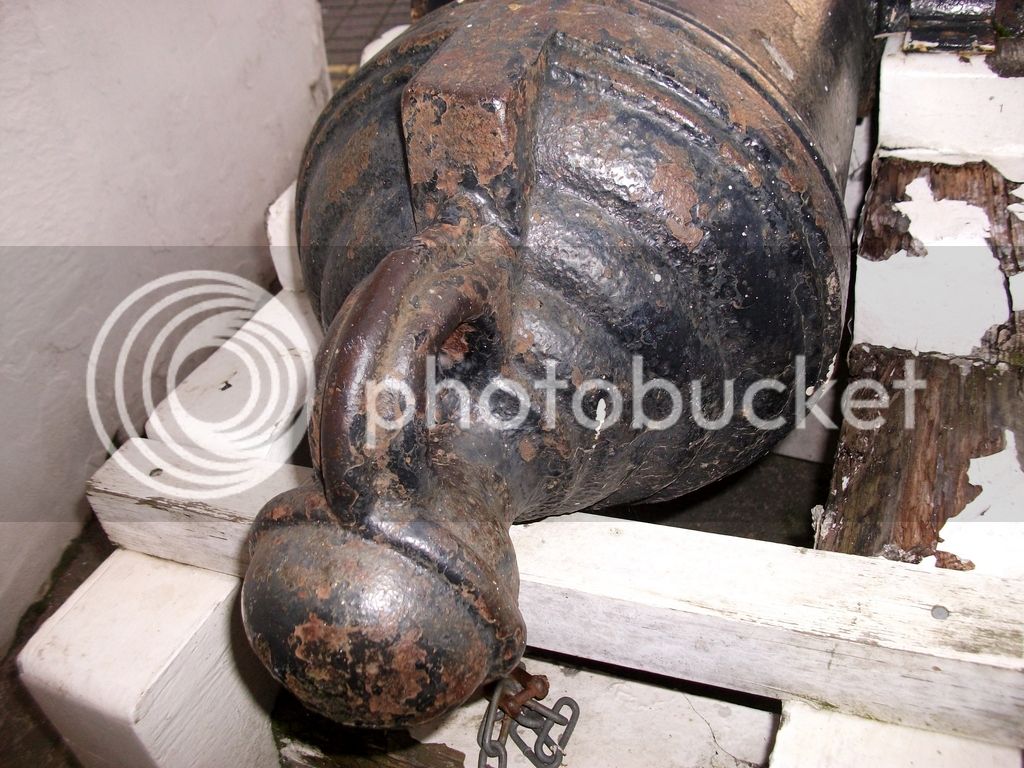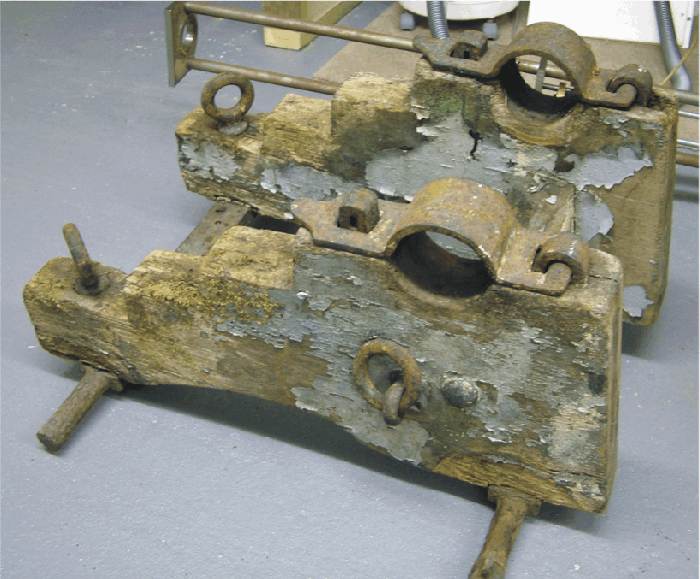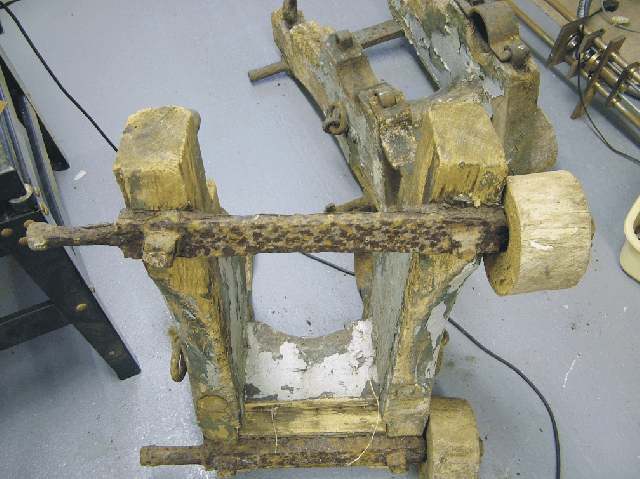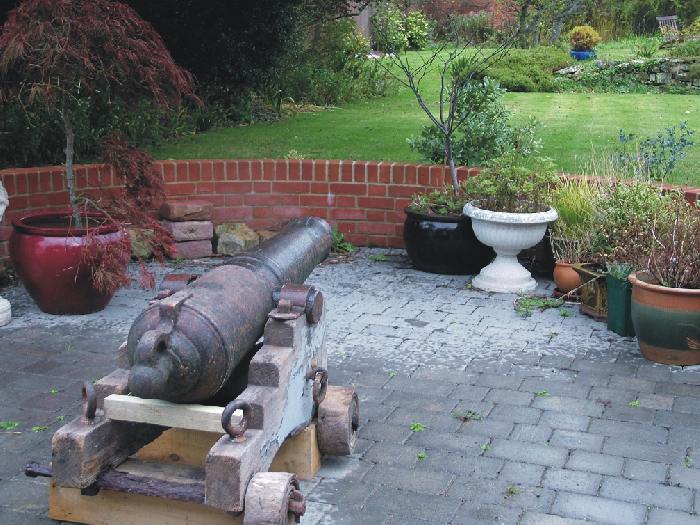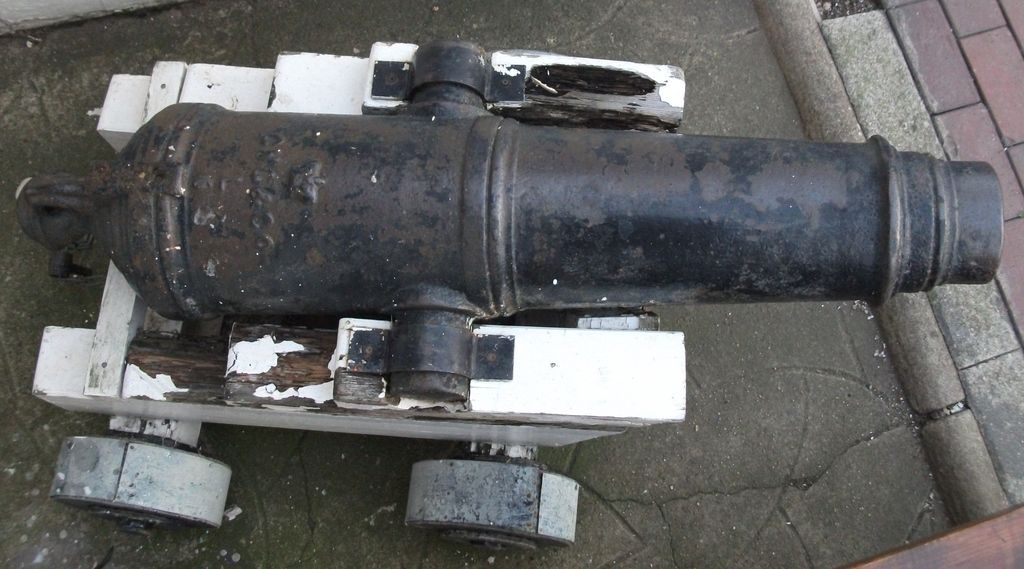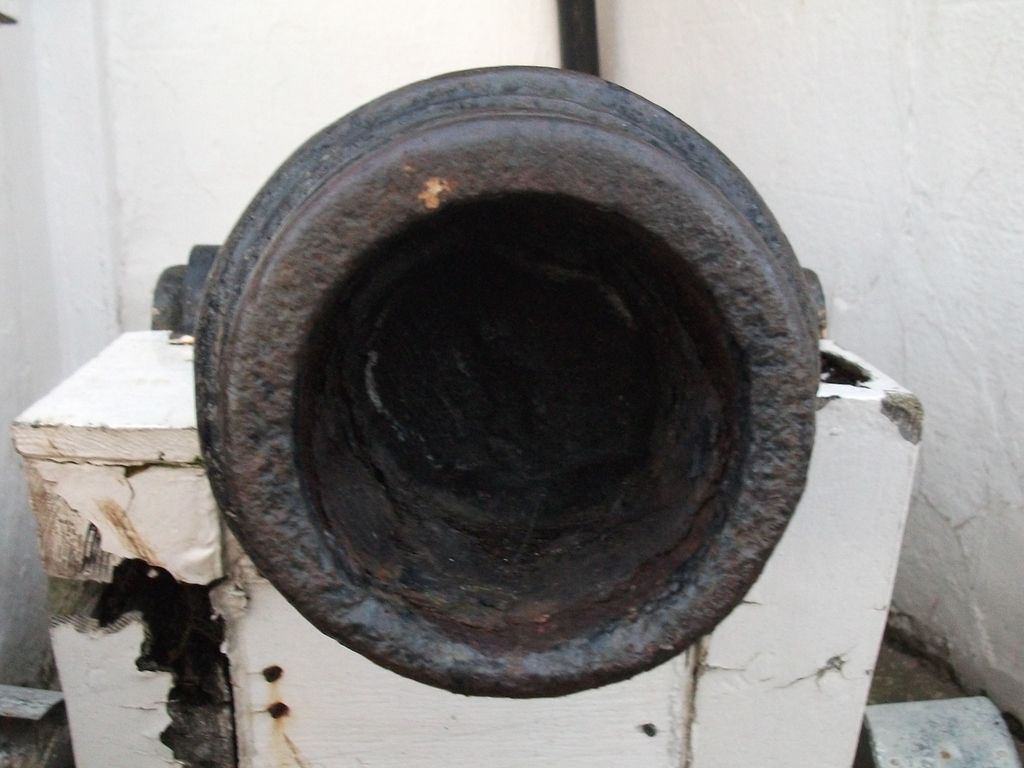Dave,
First of all, please understand I am NOT an expert on these guns but am an interested amateur. What I hope to do is give you some information and ideas and perhaps some questions that you and others may consider to ask others. Sometimes a good question to ask is very valuable.
Next, it is possible this gun is a “Gunade” rather than a Carronade. Both guns in this bore size were similar to the point that even during the time period, they may have been readily confused. (I am also not sure that Carronades were not made with trunnions as some sources state.) I will leave that to an expert on 18th/19th Naval Guns as to which is the best description of your gun. However, the use of your cannon would have been the same, no matter by what term it was/is “officially” known. The period of your gun could run from 1780 to 1850 and more on that later.
For some information on the difference between a Carronade and a Gunade, please scroll down to “3. Carronades” in the following link:
http://www.navyandmarine.org/ondeck/1800gundrill.htm
More information stating there were Carronades with Trunnions:
http://www.riv.co.nz/rnza/hist/car.htm
A Six Pound Gun like yours could have been a small Naval Gun on Small Ships of War like a Sloop of War, a gun used on Merchant Ships to ward off Pirates (or at least to get a lower insurance rate by having such guns aboard the ship), or perhaps as a land gun near navigable rivers or defend against armed landing boats. In each case, the appropriate gun carriage would have been different from other uses.
If the gun was used on land, then the Ne Plus Ultra carriage for it would have been an all Iron one as in the following link. However I may be wrong, but I doubt you want to go to that much trouble/expense and personally I think there no reason to do so.
http://www.shipspottersteve.com/blog/6-pounder-carronade-1800
The more common carriage for the gun when used on land would have been a wood carriage with Iron Rimmed Wood Wheels (Official Term was “Trucks” for naval gun carriages and not wheels, but I will use the term wheels for ease of understanding) or All Iron Wheels, though the latter is towards the end of the period of the gun’s use. Personally, I would suggest Iron Rimmed Wood Wheels for your project because they probably would be easier to make. It also looks like the two wheels on your gun have sheet Iron or steel wrapped around them in an effort to sort of replicate the Iron Rims. Iron Rimmed Wheels will stand up better to outside display than all Wood Wheels.
This link shows a Naval Gun with all Iron Wheels:
http://arc.id.au/Cannon.html
When a 6 lb. Carronade/Gunade with trunnels was used aboard ship, it would have been mounted on a Wooden Naval Gun Carriage with Wood Trucks/Wheels and WITHOUT Iron Bands around the Trucks/Wheels. Iron Bands on the Trucks/Wheels would have torn up the wooden ship’s decks too much. Here is a link to an original Gunade on a rather plain Naval Carriage that would probably be good for you to copy, except I suggest you add Iron Bands on the Trucks/Wheels if it will be displayed outside.
http://jamesdjulia.com/item/2058-373/
I will borrow the following explanation on Naval Carriages.
“Naval or garrison carriages
These were designed for use aboard a ship or within a fortification and consisted of two large wooden slabs called "cheeks" held apart by bracing pieces called "transoms". The trunnions of the gun barrel sat on the top of the cheeks; the rearward part of each cheek was stepped so that the breech could be lifted by iron leavers called "handspikes". Because these guns were not required to travel about, they were only provided with four small wheels called "trucks", whose main function was to roll backwards with the recoil of the gun and then allow it to be moved forward into a firing position after reloading. Traversing the gun was achieved by levering the rear of the carriage sideways with handspikes.[2]”
https://en.wikipedia.org/wiki/Gun_carriage
Here is a link to photo’s of a reproduction naval carriage and a really good pattern that Zulu uses to make his naval carriages and shows many of the construction details. I am not sure if Zulu will sell you a set of plans for your gun carriage, but you could ask.
http://www.muzzleloadingforum.com/fusionbb/showtopic.php?tid/276794/
For other help for a pattern/plans for a gun carriage, you might also try some of these links below to ask for help.
http://www.historicdockyard.co.uk/site-attractions/attractions/hms-victory
http://johnsmilitaryhistory.com/woolwich.html
http://www.museums.gov.gg/noondaygun
Hope this helps.
Gus
 [/URL][/img]
[/URL][/img]
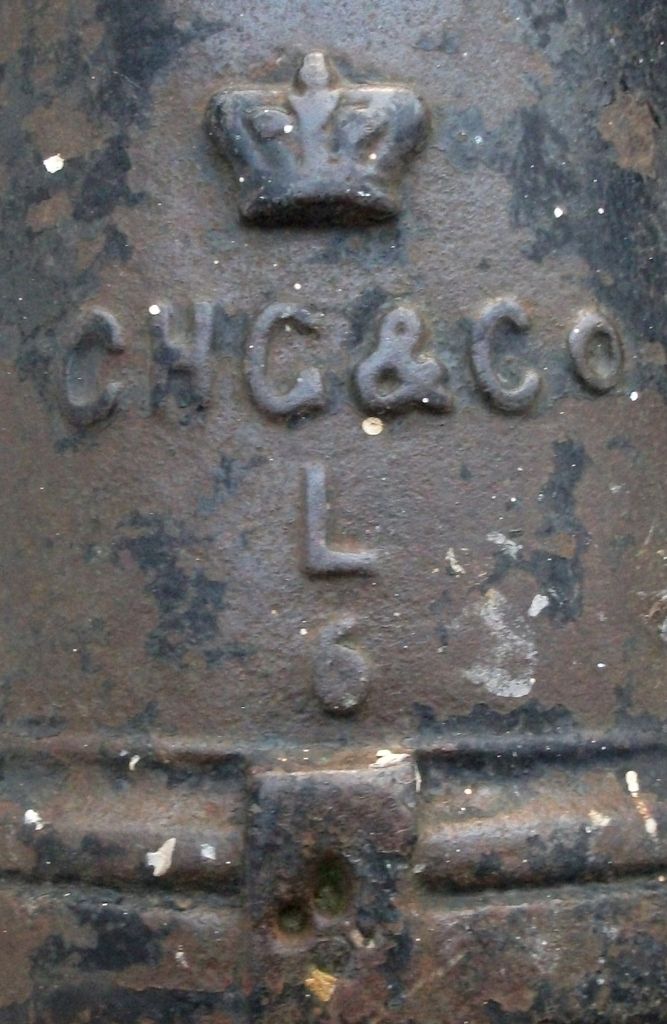 ]Link[/url]
]Link[/url]
 ]Link[/url]
]Link[/url]





